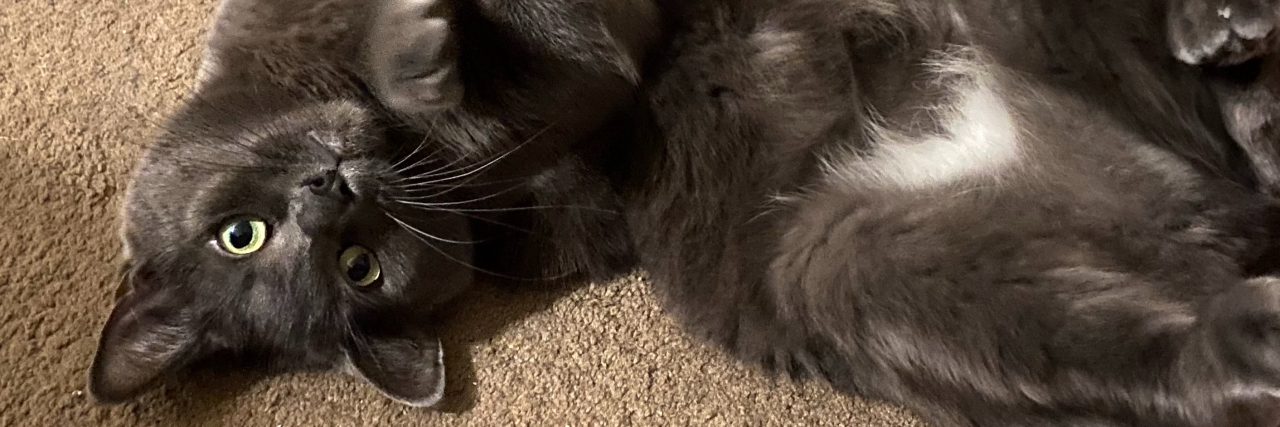It’s OK if You (Sort of) Give in to Your Anxiety Sometimes
Editor's Note
If you struggle with obsessive-compulsive disorder (OCD), the following post could be potentially triggering. You can contact the Crisis Text Line by texting “START” to 741-741. To find help, visit the International OCD Foundation’s website.
Last night, I gave in to anxiety and did a compulsion. Well, sort of.
I went over to my partner’s for dinner and was planning on spending the night, something I have done countless times before. At the same time, I couldn’t stop thinking about my cat, Jade, who gets very upset when I leave for more than a few hours. She weaves in and around my legs meowing any time she thinks I might be leaving, and when I get back she wants me to pet her constantly. Logically, she’s a cat. She has food, water and a litter box. She’s fine. But on the other hand, she is a very emotionally bonded, nervous cat, and I start to feel really bad when I leave her alone. Also, you can’t out-logic obsessive-compulsive disorder (OCD).
Rather than continuing to read and work on my homework at his place, I became wrapped up in the anxiety. I began feeling terrible for leaving her, and I had an urge to go back home immediately. I knew going home would be giving in to the anxiety and OCD. I also knew if I went home, it would make leaving her all the harder the next time. I have to be able to leave my house and have a life. I tried to question what would be working toward my values, but both my partner and my cat are part of my values. Plus, when in a thought spiral, it’s hard to think too straight about values. I’m all for doing exposure and response prevention (ERP), but at the same time, we sometimes don’t have the emotional capacity to resist. And that’s OK.
In the end, I decided to go home — well, sort of. I decided to go home but delay the compulsion by half an hour. I looked at my phone and scheduled that I could leave at 10:30 p.m. I had to sit with the anxiety until then. This is a common technique in ERP. If you can’t resist doing the compulsion altogether, delay it. This is how I did my first exposure ever in treatment. I used to have a fear of anything touching my nose. OCD told me I would breathe in that smell instead of oxygen, and die. My first exposure was to touch something with a mild smell to my nose: a piece of chocolate. Then, the goal wasn’t to completely resist washing off my nose forever. The goal was to wait five minutes before doing the compulsion. The next day, the goal was 10 minutes. Then 30. Then an hour, until I could go without washing my nose. Exposures are not black or white, resist or compulse. In dialectical behavior therapy (DBT), we call this type of compromise “walking the middle path.”
So, I laid down on his couch while he worked, and I rode the anxiety wave. Every once in a while, he came over to give me an encouraging squeeze. I mostly kept my eyes closed as I felt the fear, though I checked the time every few minutes. By the time it hit 10:30 p.m., I was noticeably calmer. I had let myself feel the anxiety, and a lot of it had come down. I would say my subjective units of distress (SUDS), a tool for measuring anxiety, went from a 7 out of 10 to a 3. I almost considered staying again. I decided though I had done enough work facing anxiety for that evening, and I went home.
Sometimes, anxiety wins. Sometimes, I win. Sometimes we both win, like in this case where I did the compulsion and was able to delay it. It’s OK to have compassion for yourself if you do the compulsion. It doesn’t mean a relapse; sometimes it’s just a lapse, or a blip, even. I’m always doing my best. And I’ll try again next time.
Morgan
Image via contributor

